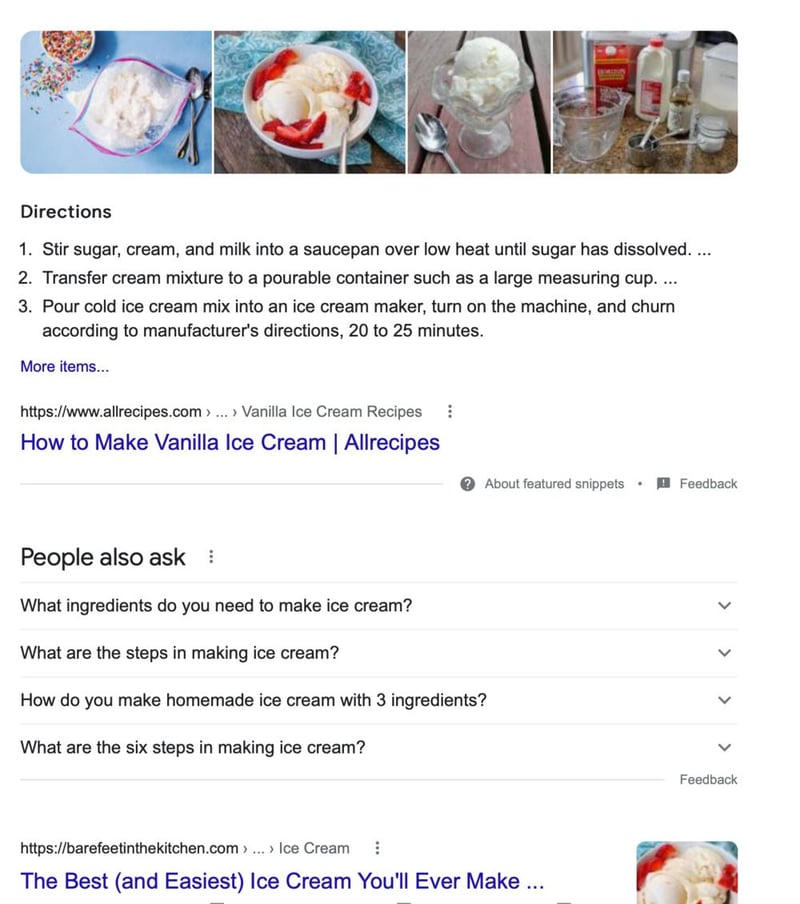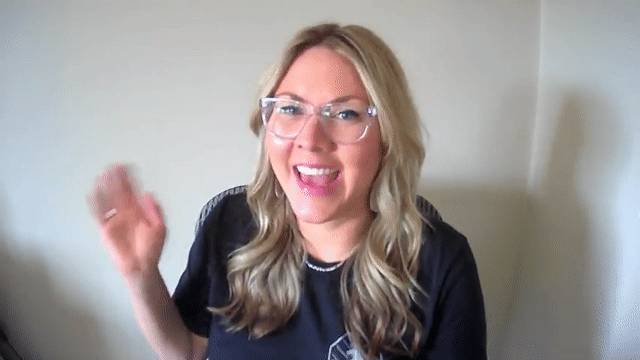Chapter 02
Pillars of Content Optimization
To create truly great content that not only generates leads but can help convert them too, you want to combine a few different aspects of SEO in every article you post. This creates a higher-level of optimization, which gives you a better shot at success.
When it comes to content creation and planning, there are a few key aspects of SEO you should pay close attention to.
Keyword Research
Keywords certainly aren’t everything, but they are still something. You need relevant keywords as part of your optimization strategy to appear in relevant search results, but you also want to make sure they’re worth the effort. To help you find and evaluate potential target keywords, you can use SEO tools like Ahrefs or Semrush.
When you’re digging through lists of search terms, remember that you don’t need power as much as relevance. The right type of content and information will do you more good than a highly visible keyword. Picking the right keywords is based on a mix of factors:
- Keyword difficulty – How hard is it to rank for the keyword? For most small to medium businesses, sticking with easy keywords is best practice. Your ideal keyword difficulty is based on your business’s overall search engine ranking.
- Search volume – How many people are searching for this keyword each month? The search volume can help you to choose keywords you know users are searching for, even if in small numbers. A large search volume is great, but it doesn’t matter if the content isn’t what the user is looking for.
- Search engine results pages (SERPs) – What information does Google show when people search for this term? Check the top ten search results to see what type of content is offered (blogs, videos, lists, etc.) and what question it’s answering. The SERPs are a great indicator of search intent.
Ideally, you want to find a keyword with a low difficulty, high search volume and SERPs that match the type of content you want to create and the question you’re prepared to answer.
You can use the same content optimization tools you use to find keywords to evaluate your own business. Enter the URL for a specific web page to see how it’s performing against the competition. Checking your ranking can help you set reasonable and attainable goals for your content.
Search Intent
This is arguably the most important part of creating optimized content. First, because if your content doesn’t match the information a user wants, they won’t click your link. Second, because if Google knows searchers won’t click your link, it won’t even show it in the first place. So, yeah, addressing search intent is key.
That being said, you’re not a mind reader. But you don’t have to be to figure out why people are using the keywords they do. You don’t even have to use tools like in keyword research. All you have to do is look at the SERPs. I’m a learning-by-doing type of gal, so let’s work through a little example.
Let’s pretend you own an ice cream parlor and you’re trying to create content for the keyword “making ice cream.” When you look at the search results for that term, you’ll see a list of recipes and how-to articles all about (you guessed it) making ice cream. This tells you that when people are searching for this keyword, they’re looking for articles about how to make ice cream at home.

To match this search intent in your own content, you want to create a blog that teaches people how to make ice cream at home. This would be a great piece if your business also sells things like ice cream salt or other special ingredients. You could address the search intent of a valuable keyword while also encouraging sales.
Google does an excellent job of catering to user intent by running sentiment and data analysis on content to evaluate if it’s a match. To give your content the best shot at generating lots of organic traffic, you have to cater to this criterion.
Content Format
Indulge me by returning to our ice cream example. When you type that phrase into the Google search bar, your results aren’t a clean white list of blog articles. Instead, there are three different content types on the page. It starts with a slide bar of ads for ice cream makers, then a list of videos about making ice cream, then the People Also Ask Box, then the blog posts. So which type of content do you think most people click on?
This is a great example of how format comes into play when optimizing content. As you look for search intent in the SERPs, you should also pay attention to what kind of content the search engine is presenting. Is it all videos? Blogs? Infographics? News articles? A mix?
Are the featured snippets showing subheadings and website content or just a few lines of text? How in-depth are the first page results for the primary type of content?
You want to focus on finding keywords associated with the same type of content you’re aiming to produce. Keep in mind that different types of content — such as visual content versus written — also require a different approach to creating and optimizing it. But that’s a topic for another blog.
So if your goal is to create blog content for your ice cream shop’s website, “making ice cream” might not be the perfect keyword. You could potentially rank a blog for that search term, but you’d still be listed below all those featured videos. In this situation, it would be better to go back to the drawing board to find a new keyword that features exclusively blog content in the search results.
Linking
Links are the holy grail of establishing authority. More specifically, links that send people to your content. It could be internal links on your website, external links to other sites or backlinks from other sites. The key is that it directs people across the whole internet back to you as a source of valuable information.
How does it work, though? Think about the last time you were reading something on a website and you clicked every hyperlink as you scrolled through the post. Before you know it, there’s seven tabs of the same site open and you’re so far down the rabbit hole that someone is welcoming you to Wonderland. For you it’s a never ending adventure, but for the website it’s a view on every page.
When Google sees this, it knows that you’re continuously providing value to users. Your original post might have been about how to make ice cream (I’ll let the example go as soon as I get some Blue Bell), but you included links to posts like “Tools to make ice cream home” and “Best strawberry ice cream recipes.” By effectively anticipating and answering your reader’s next questions, you keep them on your site and establish yourself as an authority.
The process is similar for backlinks. Except instead of establishing authority yourself, you let other websites do it for you. As more people are driven to your content from a third-party site, Google will start to recognize that people are flocking to you for answers.
The easiest way to utilize internal linking is to start using pillar pages when you create new content. A pillar page is a longer-than-average blog that broadly covers a topic. As you write your post, your sections can address specific aspects of the topic and link to other blogs you’ve created about those individual aspects. This builds a tree of information that brings value to users, keeps them on your page and establishes your site’s authority in your space.
If you’re looking for more link building opportunities, then programs like Moz might be a good place to start. They typically offer backlink analysis—how many websites are diverting users to your pages—and some even have other SEO capabilities.
Metadata
Search engines don’t just scan your content...they scan everything. Metadata is all the information within your content that describes what it is and why it’s there. It’s kind of like your website’s underwear. People won’t see it, but you should still put it on.
The most common type of metadata is a meta description. This is that little featured snippet under your URL that gives users an idea of what your web page is about. Google can auto populate a portion of your text, but it’s generally better to create a description yourself. Here’s some quick guidelines to writing a great meta description:
- Utilize your primary keyword in the description. This helps to show the user and Google that your article is relevant to the search term.
- Use active voice to speak directly to users and give them clear instructions on what you want them to do. “Click the link to learn more!”
- The ideal length is between 150-175 characters, and 165 is optimal.
Although it’s the most popular, meta descriptions aren’t the only kind of metadata you should be thinking about. Commonly overlooked metadata includes:
- Title tags and headers: You can use headings and titles to create SEO content by strategically including keywords. This is the initial blip on a search engine’s radar that your content might be relevant.
- Anchor text: Search engines like to use anchor text as a general indicator of what the linked resource is about. Choosing anchor text wisely can help you establish authority.
- Meta tags: This type of metadata is buried in your content’s code. It’s a brief description of your post that only the computer will be able to see.
- Alt tags: Alt text exists for programs like screen readers to describe images and graphs. The text won’t appear directly on the page, but search engines still consider it part of your content.







